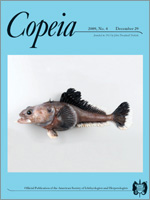Hybridization is an evolutionarily important process with varied outcomes that depend on interacting factors of time since common ancestry, behavioral differences, and environmental conditions. Hybridization is relatively common in teleost fishes, and patterns from naturally occurring hybrids and experimental interspecific crosses provide insight into the evolution of reproductive barriers that lead to speciation. It has been several decades since records of hybrid darter specimens (Percidae: Etheostomatinae) have been collected and analyzed. We assembled a dataset of 252 reported natural hybrids from museum collections and literature reports that comprise 67 unique hybrid combinations involving 63 darter species. Frequencies of unique hybrid combinations decrease with phylogenetic distance and are lower between species with different egg deposition behaviors. Large range size and egg burying reproductive behavior were characteristics of the species most frequently identified as a parental species of hybrid specimens. Evidence of genetic introgression was not consistently predicted by the frequency of records for a particular hybrid combination. This dataset likely underestimates the amount of hybridization that has occurred among darter species, because of the relatively narrow evolutionary time frame during which specimens have been collected and identified.
How to translate text using browser tools
29 December 2009
Patterns of Natural Hybridization in Darters (Percidae: Etheostomatinae)
Benjamin P. Keck,
Thomas J. Near
ACCESS THE FULL ARTICLE





